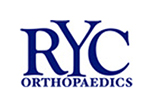News
New pain relief technique for ACL knee surgery preserves muscle strength
Source: Medical News Today
Anesthesiologists can significantly reduce loss of muscle strength in ACL knee surgery patients using a new pain management technique, a new study has found.
Why treating shoulder pain in baseball pitchers and other throwing athletes is so difficult
Source: Science Daily
Despite increasing medical knowledge, treating shoulder pain in baseball pitchers and other throwing athletes remains one of the most challenging tasks in sports medicine.
“The results of treatment are not as predictable as the patient, family, trainer, coach and doctor would like to think,” according to an article in the journal Physical Medicine and Rehabilitation Clinics of North America.
Study supports efficacy of closed reduction, percutaneous fixation of crescent-fracture dislocations
Source: Healio
Recently published data highlight the safety and efficacy of closed reduction and percutaneous screw fixation for the treatment of crescent fracture-dislocation of the sacroiliac joint and indicate satisfactory function and radiographic outcomes with the procedure.
Imaging identifies cartilage regeneration in long-distance runners
Source: Medical News Today
Using a mobile MRI truck, researchers followed runners for 4,500 kilometers through Europe to study the physical limits and adaptation of athletes over a 64-day period, according to a study presented today at the annual meeting of the Radiological Society of North America (RSNA).
What Happens When You Crack Your Knuckles
Source: Daily Rx News
Despite the wives’ tales that tie cracking your knuckles to problems like arthritis, many habitual knuckle-crackers just can’t help themselves. But do they really have anything to fear?
Patient-reported results, knee stability improved after all-inside double-bundle ACL reconstruction
Source: Healio
Investigators found significant improvements from preoperative measures at 24.8-month follow-up for both mean side-to-side differences and Lysholm scores in patients who underwent double-bundle ACL reconstruction using a special drill pin guide and reamer, along with a laser- guided device to facilitate a transtibial approach.
High rate of bone graft resorption found after Latarjet procedure for shoulder instability
Source: Healio
Researchers of this study note that although the open Latarjet procedure provided significant improvement in clinical scores for patients with anterior shoulder instability and glenoid bone loss, 90.5% of patients showed graft resorption on CT at 1-year postoperatively.
Recommendations for patient activity after knee replacement vary among surgeons
Source: Healio
During recovery after knee replacement surgery, exercise is critical. After initial recovery, patients will want to resume more strenuous activities. In addition to exercise prescribed by a physical therapist, several studies have shown patients who participated in athletic activities prior to surgery will want to continue this practice after surgery. However, how much activity and how strenuous this activity should be remains unclear.
KATOR suture anchor system receives FDA 510(k) clearance
Source: Healio
KATOR announced it has received FDA 510(k) clearance for the KATOR Suture Anchor System.
Stresses on elbow during pitching may alter multiple structures
Source: Healio
In a pre- and post-season ultrasound evaluation of high school pitchers’ elbows, adaptive changes occurred to multiple structures about the elbow from stresses placed on the elbow during one season of pitching, based on results of a recently published study.





